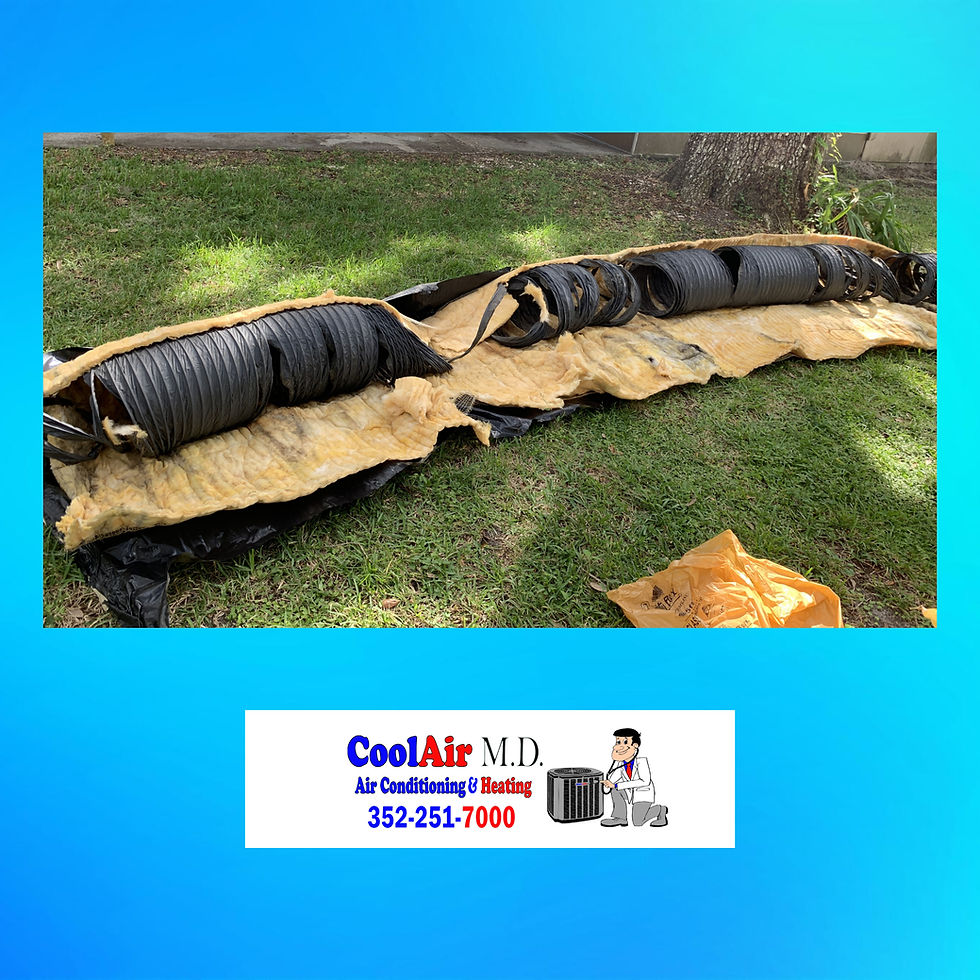⚠️ The Silent Threat: Understanding Inner Liner Damage in Florida Mobile Home Ductwork hvac repair
- Cool Air M.D.
- Sep 1, 2025
- 2 min read

Mobile homes provide convenience, flexibility, and affordability. But when it comes to HVAC, they come with unique challenges—especially in their ductwork.
One issue we often uncover in the field is inner liner damage. Even when the outer shell of the duct looks fine, the inside can be deteriorating—silently undermining your comfort, efficiency, and even air quality.
🛠️ What the Inner Liner Does: Florida mobile home HVAC repair
Inside flexible ductwork is a thin inner liner, typically made from foil or plastic. Its job is to direct airflow smoothly through the system. But unlike the tough outer insulation, the inner liner is fragile and prone to:
Moisture damage
Pest intrusion
Aging and wear
On a Florida mobile home HVAC repair, when the liner fails, air leaks out, efficiency drops, and your system has to work harder.
💧 Moisture: The Hidden Enemy
Florida’s humidity makes moisture intrusion a leading cause of inner liner failure.
Condensation forms inside ducts when insulation is thin or worn.
Plumbing or roof leaks can drip into ducts.
Over time, water weakens the liner, causing it to crack, tear, or collapse.
The result: reduced airflow, mold growth, and higher energy bills.
🐀 Pests in the Ductwork
Mobile home ductwork often runs in accessible spaces—perfect for pests like:
Rodents chewing holes for nesting
Insects building colonies inside ducts
Critters weakening seals or insulation
Even small chew marks can escalate into major airflow loss.
⏳ Age-Related Deterioration
The materials used in mobile home ducts aren’t built to last forever. Over the years, liners become brittle, sag, and eventually fail. Unfortunately, this damage often stays hidden until you notice:
Rooms that won’t stay cool
Uneven airflow
Rising utility bills
📸 Proof from the Field
On a recent call, we cut open a 25-foot length of ductwork that looked fine from the outside. Inside, the inner liner was shredded along its entire length. The photo says it all: what looks intact on the surface may be failing where you can’t see it.
✅ What Homeowners Can Do
Schedule regular inspections to catch hidden damage.
Watch for warning signs: mold, water stains, weak airflow.
Seal entry points to keep pests out.
Upgrade ductwork materials when repairs are no longer enough.
📞 Don’t wait until hidden damage destroys efficiency. Call Cool Air M.D. today for a mobile home ductwork inspection—and breathe easier knowing your air is flowing the way it should.




Comments